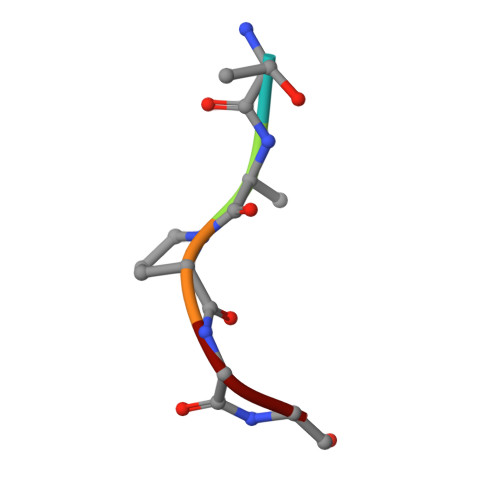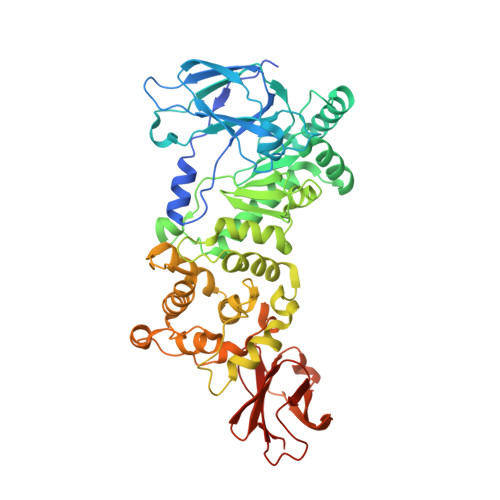Recognition of protein-linked glycans as a determinant of peptidase activity.
Noach, I., Ficko-Blean, E., Pluvinage, B., Stuart, C., Jenkins, M.L., Brochu, D., Buenbrazo, N., Wakarchuk, W., Burke, J.E., Gilbert, M., Boraston, A.B.(2017) Proc Natl Acad Sci U S A 114: E679-E688
- PubMed: 28096352
- DOI: https://doi.org/10.1073/pnas.1615141114
- Primary Citation of Related Structures:
5KD2, 5KD5, 5KD8, 5KDJ, 5KDN, 5KDS, 5KDU, 5KDV, 5KDW, 5KDX - PubMed Abstract:
The vast majority of proteins are posttranslationally altered, with the addition of covalently linked sugars (glycosylation) being one of the most abundant modifications. However, despite the hydrolysis of protein peptide bonds by peptidases being a process essential to all life on Earth, the fundamental details of how peptidases accommodate posttranslational modifications, including glycosylation, has not been addressed. Through biochemical analyses and X-ray crystallographic structures we show that to hydrolyze their substrates, three structurally related metallopeptidases require the specific recognition of O-linked glycan modifications via carbohydrate-specific subsites immediately adjacent to their peptidase catalytic machinery. The three peptidases showed selectivity for different glycans, revealing protein-specific adaptations to particular glycan modifications, yet always cleaved the peptide bond immediately preceding the glycosylated residue. This insight builds upon the paradigm of how peptidases recognize substrates and provides a molecular understanding of glycoprotein degradation.
Organizational Affiliation:
Department of Biochemistry and Microbiology, University of Victoria, Victoria, BC V8W 3P6, Canada.




















